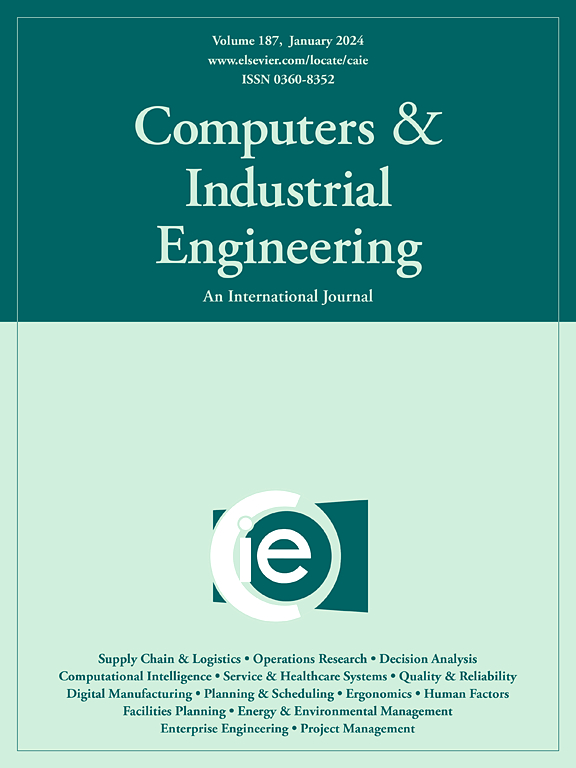AI-based hybrid knowledge extraction method in complex engineering scenarios: A case study of drill-and-blast tunnelling excavation
IF 6.5
1区 工程技术
Q1 COMPUTER SCIENCE, INTERDISCIPLINARY APPLICATIONS
引用次数: 0
Abstract
The explosive rise of generative AI models is reshaping both the technological trajectory and developmental landscape of industrial intelligence. However, these large language models demonstrate significant limitations when processing specialized engineering knowledge due to intricate knowledge systems and domain expertise fragmented across various unstructured sources. An AI-based hybrid knowledge extraction method (AHKEM) is proposed to address these challenges in complex engineering scenarios. The method integrates AI techniques and large language models into a systematic framework: TF–IDF analysis is combined with word vector semantics for entity identification across extensive textual corpora, Bert-BiLSTM-CRF is employed for entity recognition, and a novel two-stage hierarchical clustering-GPT relationship mining method (HC-GPT RMM) is utilized for relationship extraction. The approach was demonstrated through a case study of drill-and-blast tunnelling excavation, a typical engineering scenario with complex data characteristics, using a corpus that comprised 13 specifications and standards, 4 professional books, and 343 academic papers, resulting in a knowledge graph containing 1,607 entities and 1,582 relationships that effectively supports various intelligent applications in construction practice. The advantages of AHKEM in handling complex domain knowledge are further validated through comparative experiments with joint extraction approaches. Both a practical framework for knowledge extraction in engineering domains is provided by this study and its application value is demonstrated through a specific construction scenario.
复杂工程场景下基于人工智能的混合知识提取方法——以钻爆隧道开挖为例
生成式人工智能模型的爆炸性崛起正在重塑工业智能的技术轨迹和发展格局。然而,由于复杂的知识系统和跨各种非结构化来源的领域专业知识,这些大型语言模型在处理专门的工程知识时显示出明显的局限性。提出了一种基于人工智能的混合知识提取方法(AHKEM)来解决复杂工程场景中的这些挑战。该方法将人工智能技术和大型语言模型集成到一个系统框架中:将TF-IDF分析与词向量语义相结合,用于跨广泛文本语料库的实体识别,使用Bert-BiLSTM-CRF进行实体识别,并使用一种新的两阶段分层聚类- gpt关系挖掘方法(HC-GPT RMM)进行关系提取。该方法以钻爆隧道开挖为例进行了验证,这是一个具有复杂数据特征的典型工程场景,使用了包含13个规范和标准、4本专业书籍和343篇学术论文的语料库,得到了一个包含1607个实体和1582个关系的知识图谱,有效地支持了施工实践中的各种智能应用。通过与联合抽取方法的对比实验,进一步验证了AHKEM在处理复杂领域知识方面的优势。本研究为工程领域的知识抽取提供了一个实用的框架,并通过具体的构建场景展示了其应用价值。
本文章由计算机程序翻译,如有差异,请以英文原文为准。
求助全文
约1分钟内获得全文
求助全文
来源期刊

Computers & Industrial Engineering
工程技术-工程:工业
CiteScore
12.70
自引率
12.70%
发文量
794
审稿时长
10.6 months
期刊介绍:
Computers & Industrial Engineering (CAIE) is dedicated to researchers, educators, and practitioners in industrial engineering and related fields. Pioneering the integration of computers in research, education, and practice, industrial engineering has evolved to make computers and electronic communication integral to its domain. CAIE publishes original contributions focusing on the development of novel computerized methodologies to address industrial engineering problems. It also highlights the applications of these methodologies to issues within the broader industrial engineering and associated communities. The journal actively encourages submissions that push the boundaries of fundamental theories and concepts in industrial engineering techniques.
 求助内容:
求助内容: 应助结果提醒方式:
应助结果提醒方式:


